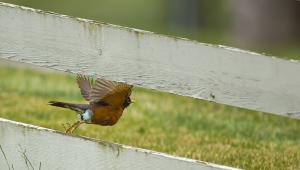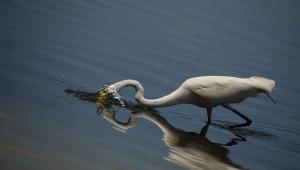ExpoImaging’s Ray Flash; A Ringlight For The Rest Of Us Page 2
Because the flash is not fired directly at the subject, the guide number of the host is reduced, but at the same time with real-life subjects I was able to shoot at small apertures and modest (320-400) ISO speed settings. ExpoImaging claims that the Ray Flash does not change the flash’s color temperature and all my testing shows that to be the case.
I like to use flash when doing close-up photography but the problem, even when using an SLR’s built-in or pop-up flash, is that the flash head is too far away from the lens and more often than not will cast big ugly shadows on your subject, ruining the photograph. A ringlight allows you to poke your lens close to the subject, especially botanics, allowing it to illuminate a flower’s nooks and crannies, or stamens and pistils as the case may be.
 |
|
|
After some test shots with stationary subjects—flowers—and a more controlled lighting environment, I decided to put the Ray Flash to the ultimate test: shooting butterflies. Lighting inside Denver’s Butterfly Pavilion (www.butterflies.org) varies from direct sunlight to deep shadows and the subjects are, to say the least, flighty. When using Canon’s Macro Ring Lite MR-14EX there I almost always have to shoot in Manual mode to get exposures that look good. I wanted to see how the Ray Flash performed under these kinds of variable lighting conditions.
The short answer is pretty good, although I attribute most of the excellent autoexposure performance to the 580EX II. The Ray Flash is, after all, a passive device. While I was able to get acceptable photographs of the butterflies in Aperture and even Program modes, the best shots turned out to be made in Manual mode. This doesn’t mean the Ray Flash didn’t perform well. It did and I’m not so sure that the autoexposure photographs that I captured with it at the Butterfly Pavilion were not better than shots previously made using Canon’s MR-14EX ringlight, which may be a function of the larger physical size of the ringlight portion of the adapter.
 |
|
|
The Ray Flash costs $299. A Canon Macro Ring Lite MR-14EX is $470 plus $14.95 for a Macrolite Adapter for your specific lens. Nikon’s R1 Wireless Close-Up Speedlight System will set you back $389.95, but provides more control than the Ray Flash since it uses multiple flash heads. Nevertheless, the Ray Flash has an obvious cost advantage over both solutions and that sorta makes up for the fact that both Canon and Nikon systems are slightly less bulky to use, especially when handheld. The Ray Flash is a larger and clunkier solution than a “real” ringlight but unless you’re a pro who spends a lot of time shooting small objects and don’t use or need a ringlight all the time, ExpoImaging’s Ray Flash is an economical solution for those occasions when you do need one.
 |
|
|
For more information, contact ExpoImaging, Inc., 121 Aviation Way, Watsonville, CA 95076; (831) 761-2040; www.expoimaging.net.
- Log in or register to post comments

































